Human brain
From Wikipedia, the free encyclopedia
This article is about features specific to the human brain. For basic information about brains, see Brain.
| The Human Brain | |
|---|---|
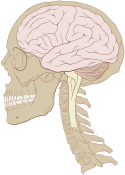 | |
| Human brain and skull | |
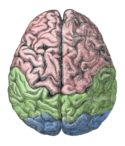 | |
| Cerebral lobes: the frontal lobe (pink), parietal lobe (green) and occipital lobe (blue) | |
| Latin | Cerebrum |
| Gray's | subject #184 736 |
| System | Central nervous system |
| Artery | Internal carotid arteries, vertebral arteries |
| Vein | Internal jugular vein, Cerebral veins, external veins, basal vein, terminal vein, choroid vein, cerebellar veins |
| Precursor | Neural tube |
The human cerebral cortex is a thick layer of neural tissue that covers most of the brain. This layer is folded in a way that increases the amount of surface that can fit into the volume available. The pattern of folds is similar across individuals, although there are many small variations. The cortex is divided into four "lobes", called the frontal lobe, parietal lobe, temporal lobe, and occipital lobe. (Some classification systems also include a limbic lobe and treat the insular cortex as a lobe.) Within each lobe are numerous cortical areas, each associated with a particular function such as vision, motor control, language, etc. The left and right sides of the cortex are broadly similar in shape, and most cortical areas are replicated on both sides. Some areas, though, show strong lateralization, particularly areas that are involved in language. In most people, the left hemisphere is "dominant" for language, with the right hemisphere playing only a minor role. There are other functions, such as spatiotemporal reasoning, for which the right hemisphere is usually dominant.
Despite being protected by the thick bones of the skull, suspended in cerebrospinal fluid, and isolated from the bloodstream by the blood–brain barrier, the human brain is susceptible to many types of damage and disease. The most common forms of physical damage are closed head injuries such as a blow to the head, a stroke, or poisoning by a variety of chemicals that can act as neurotoxins. Infection of the brain, though serious, is rare due to the biological barriers which protect it. The human brain is also susceptible to degenerative disorders, such as Parkinson's disease, multiple sclerosis, and Alzheimer's disease. A number of psychiatric conditions, such as schizophrenia and depression, are thought to be associated with brain dysfunctions, although the nature of such brain anomalies is not well understood.
Scientifically, the techniques that are used to study the human brain differ in important ways from those that are used to study other animal species. On the one hand, invasive techniques such as inserting electrodes into the brain, or disabling parts of the brain in order to examine the effect on behavior, can be used with non-human species, but for ethical reasons, are generally not performed with humans. On the other hand, humans are the only subjects who can respond to complex verbal instructions. Thus, it is often possible to use non-invasive techniques such as functional neuroimaging or EEG recording more productively with humans than with non-humans. Furthermore, some of the most important topics, such as language, can hardly be studied at all except in humans. In many cases, human and non-human studies form essential complements to each other. Individual brain cells can only be studied in non-humans; complex cognitive tasks can only be studied in humans. Combining the two sources of information to yield a complete functional understanding of the human brain is an ongoing challenge for neuroscience.
Contents |
Structure
The adult human brain weighs on average about 3 lbs. (1.5 kg)[1] with a volume of around 1130 cubic centimetres (cm3) in women and 1260 cm3 in men, although there is substantial individual variation.[2] Men with the same body height and body surface area as women have on average 100g heavier brains,[3] although these differences do not correlate in any simple way with IQ or other measures of cognitive performance.[4]The cerebral hemispheres form the largest part of the human brain and are situated above most other brain structures. They are covered with a cortical layer with a convoluted topography.[5] Underneath the cerebrum lies the brainstem, resembling a stalk on which the cerebrum is attached. At the rear of the brain, beneath the cerebrum and behind the brainstem, is the cerebellum, a structure with a horizontally furrowed surface that makes it look different from any other brain area. The same structures are present in other mammals, although they vary considerably in relative size. As a rule, the smaller the cerebrum, the less convoluted the cortex. The cortex of a rat or mouse is almost perfectly smooth. The cortex of a dolphin or whale, on the other hand, is more convoluted than the cortex of a human.
The living brain is very soft, having a consistency similar to soft gelatin or soft tofu. Despite being referred to as grey matter, the live cortex is pinkish-beige in color and slightly off-white in the interior.
General features
The human brain has many properties that are common to all vertebrate brains, including a basic division into three parts called the forebrain, midbrain, and hindbrain, each with fluid-filled ventricles at their core, and a set of generic vertebrate brain structures including the medulla oblongata, pons, cerebellum, optic tectum, thalamus, hypothalamus, basal ganglia, olfactory bulb, and many others.As a mammalian brain, the human brain has special features that are common to all mammalian brains, most notably a six-layered cerebral cortex and a set of structures associated with it, including the hippocampus and amygdala. All vertebrates have a forebrain whose upper surface is covered with a layer of neural tissue called the pallium, but in all except mammals the pallium has a relatively simple three-layered cell structure. In mammals it has a much more complex six-layered cell structure, and is given a different name, the cerebral cortex. The hippocampus and amygdala also originate from the pallium, but are much more complex in mammals than in other vertebrates.
As a primate brain, the human brain has a much larger cerebral cortex, in proportion to body size, than most mammals, and a very highly developed visual system. The shape of the brain within the skull is also altered somewhat as a consequence of the upright position in which primates hold their heads.
As a hominid brain, the human brain is substantially enlarged even in comparison to the brain of a typical monkey. The sequence of evolution from Australopithecus (four million years ago) to Homo sapiens (modern man) was marked by a steady increase in brain size, particularly in the frontal lobes, which are associated with a variety of high-level cognitive functions. (It is noteworthy, though, that Neanderthals, an extinct subspecies of modern humans, had larger brains at adulthood than present-day humans.[6])
Humans and other primates have some differences in gene sequence, and genes are differentially expressed in many brain regions. The functional differences between the human brain and the brains of other animals also arise from many gene–environment interactions.[7]
Cerebral cortex

Bisection of the head of an adult female, showing the cerebral cortex and underlying white matter[8]
The cerebral cortex is essentially a sheet of neural tissue, folded in a way that allows a large surface area to fit within the confines of the skull. When unfolded, each cerebral hemisphere has a total surface area of about 1.3 square feet (0.12 m2).[11] Anatomists call each cortical fold a sulcus, and the smooth area between folds a gyrus.
Cortical divisions
Four lobes
The cerebral cortex is nearly symmetrical, with left and right hemispheres that are approximate mirror images of each other. Anatomists conventionally divide each hemisphere into four "lobes", the frontal lobe, parietal lobe, occipital lobe, and temporal lobe. With one exception, this division into lobes does not derive from the structure of the cortex itself, though: the lobes are named after the bones of the skull that overlie them, the frontal bone, parietal bone, temporal bone, and occipital bone. The borders between lobes lie beneath the sutures that link the skull bones together. The exception is the border between the frontal and parietal lobes, which lies behind the corresponding suture; instead it follows the anatomical boundary of the central sulcus, a deep fold in the brain's structure where the primary somatosensory cortex and primary motor cortex meet.Because of the arbitrary way most of the borders between lobes are demarcated, they have little functional significance. With the exception of the occipital lobe, a small area that is entirely dedicated to vision, each of the lobes contains a variety of brain areas that have minimal functional relationship. The parietal lobe, for example, contains areas involved in somatosensation, hearing, language, attention, and spatial cognition. In spite of this heterogeneity, the division into lobes is convenient for reference. The main functions of the frontal lobe are to control attention, abstract thinking, behavior, problem solving tasks, and physical reactions and personality.[12] The occipital lobe is the smallest lobe; its main functions are visual reception, visual-spatial processing, movement, and color recognition.[13] The temporal lobe controls auditory and visual memories, language, and some hearing and speech.[12]
Major folds
Although there are enough variations in the shape and placement of gyri and sulci (cortical folds) to make every brain unique, most human brains show sufficiently consistent patterns of folding that allow them to be named. Many of the gyri and sulci are named according to the location on the lobes or other major folds on the cortex. These include:- Superior, Middle, Inferior frontal gyrus: in reference to the frontal lobe
- Medial longitudinal fissure, which separates the left and right cerebral hemispheres
- Precentral and Postcentral sulcus: in reference to the central sulcus, which separates the frontal lobe from the parietal lobe
- Lateral sulcus, which divides the frontal lobe and parietal lobe above from the temporal lobe below
- Parieto-occipital sulcus, which separates the parietal lobes from the occipital lobes, is seen to some small extent on the lateral surface of the hemisphere, but mainly on the medial surface.
- Trans-occipital sulcus: in reference to the occipital lobe
Functional divisions
| This section needs additional citations for verification. (December 2011) |
Cytoarchitecture
Different parts of the cerebral cortex are involved in different cognitive and behavioral functions. The differences show up in a number of ways: the effects of localized brain damage, regional activity patterns exposed when the brain is examined using functional imaging techniques, connectivity with subcortical areas, and regional differences in the cellular architecture of the cortex. Anatomists describe most of the cortex—the part they call isocortex—as having six layers, but not all layers are apparent in all areas, and even when a layer is present, its thickness and cellular organization may vary. Several anatomists have constructed maps of cortical areas on the basis of variations in the appearance of the layers as seen with a microscope. One of the most widely used schemes came from Brodmann, who split the cortex into 51 different areas and assigned each a number (anatomists have since subdivided many of the Brodmann areas). For example, Brodmann area 1 is the primary somatosensory cortex, Brodmann area 17 is the primary visual cortex, and Brodmann area 25 is the anterior cingulate cortex.[15]Topography
Many of the brain areas Brodmann defined have their own complex internal structures. In a number of cases, brain areas are organized into "topographic maps", where adjoining bits of the cortex correspond to adjoining parts of the body, or of some more abstract entity. A simple example of this type of correspondence is the primary motor cortex, a strip of tissue running along the anterior edge of the central sulcus, shown in the image to the right. Motor areas innervating each part of the body arise from a distinct zone, with neighboring body parts represented by neighboring zones. Electrical stimulation of the cortex at any point causes a muscle-contraction in the represented body part. This "somatotopic" representation is not evenly distributed, however. The head, for example, is represented by a region about three times as large as the zone for the entire back and trunk. The size of any zone correlates to the precision of motor control and sensory discrimination possible.[citation needed] The areas for the lips, fingers, and tongue are particularly large, considering the proportional size of their represented body parts.In visual areas, the maps are retinotopic—that is, they reflect the topography of the retina, the layer of light-activated neurons lining the back of the eye. In this case too the representation is uneven: the fovea—the area at the center of the visual field—is greatly overrepresented compared to the periphery. The visual circuitry in the human cerebral cortex contains several dozen distinct retinotopic maps, each devoted to analyzing the visual input stream in a particular way.[citation needed] The primary visual cortex (Brodmann area 17), which is the main recipient of direct input from the visual part of the thalamus, contains many neurons that are most easily activated by edges with a particular orientation moving across a particular point in the visual field. Visual areas farther downstream extract features such as color, motion, and shape.
In auditory areas, the primary map is tonotopic. Sounds are parsed according to frequency (i.e., high pitch vs. low pitch) by subcortical auditory areas, and this parsing is reflected by the primary auditory zone of the cortex. As with the visual system, there are a number of tonotopic cortical maps, each devoted to analyzing sound in a particular way.
Within a topographic map there can sometimes be finer levels of spatial structure. In the primary visual cortex, for example, where the main organization is retinotopic and the main responses are to moving edges, cells that respond to different edge-orientations are spatially segregated from one another.[citation needed]
Cognition
Understanding the relationship between the brain and the mind is a great challenge.[16] It is very difficult to imagine how mental entities such as thoughts and emotions could be implemented by physical entities such as neurons and synapses, or by any other type of mechanism. The difficulty was expressed by Gottfried Leibniz in an analogy known as Leibniz's Mill:Incredulity about the possibility of a mechanistic explanation of thought drove René Descartes, and most of humankind along with him, to dualism: the belief that the mind exists independently of the brain.[18] There has always, however been a strong argument in the opposite direction. There is overwhelming evidence that physical manipulations of, or damage to, the brain (for example by drugs or diseases, respectively) can affect the mind in potent and intimate ways.[19] For example, a person suffering from Alzheimer's disease—a condition that causes physical damage to the brain—also experiences a compromised "mind". In this line of thinking, a large body of empirical evidence for a close relationship between brain activity and mind activity has led most neuroscientists to be materialists. Materialists believe that mental phenomena are ultimately reducible to physical phenomena.[20]One is obliged to admit that perception and what depends upon it is inexplicable on mechanical principles, that is, by figures and motions. In imagining that there is a machine whose construction would enable it to think, to sense, and to have perception, one could conceive it enlarged while retaining the same proportions, so that one could enter into it, just like into a windmill. Supposing this, one should, when visiting within it, find only parts pushing one another, and never anything by which to explain a perception.
- — Leibniz, Monadology[17]
Lateralization
Main article: Lateralization of brain function
Each hemisphere of the brain interacts primarily with one half of the body, but for reasons that are unclear, the connections are crossed: the left side of the brain interacts with the right side of the body, and vice versa.[citation needed] Motor connections from the brain to the spinal cord, and sensory connections from the spinal cord to the brain, both cross the midline at the level of the brainstem. Visual input follows a more complex rule: the optic nerves from the two eyes come together at a point called the optic chiasm, and half of the fibers from each nerve split off to join the other. The result is that connections from the left half of the retina, in both eyes, go to the left side of the brain, whereas connections from the right half of the retina go to the right side of the brain. Because each half of the retina receives light coming from the opposite half of the visual field, the functional consequence is that visual input from the left side of the world goes to the right side of the brain, and vice versa. Thus, the right side of the brain receives somatosensory input from the left side of the body, and visual input from the left side of the visual field—an arrangement that presumably is helpful for visuomotor coordination.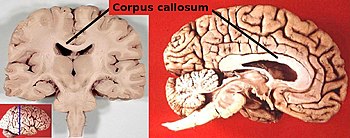
The corpus callosum, a nerve bundle connecting the two cerebral hemispheres, with the lateral ventricles directly below
In most respects, the left and right sides of the brain are symmetrical in terms of function. For example, the counterpart of the left-hemisphere motor area controlling the right hand is the right-hemisphere area controlling the left hand. There are, however, several very important exceptions, involving language and spatial cognition. In most people, the left hemisphere is "dominant" for language: a stroke that damages a key language area in the left hemisphere can leave the victim unable to speak or understand, whereas equivalent damage to the right hemisphere would cause only minor impairment to language skills.
A substantial part of our current understanding of the interactions between the two hemispheres has come from the study of "split-brain patients"—people who underwent surgical transection of the corpus callosum in an attempt to reduce the severity of epileptic seizures. These patients do not show unusual behavior that is immediately obvious, but in some cases can behave almost like two different people in the same body, with the right hand taking an action and then the left hand undoing it. Most such patients, when briefly shown a picture on the right side of the point of visual fixation, are able to describe it verbally, but when the picture is shown on the left, are unable to describe it, but may be able to give an indication with the left hand of the nature of the object shown.
Development
Main article: Neural development in humans
Further information: Human brain development timeline
During the first 3 weeks of gestation, the human embryo's ectoderm forms a thickened strip called the neural plate. The neural plate then folds and closes to form the neural tube. This tube flexes as it grows, forming the crescent-shaped cerebral hemispheres at the head, and the cerebellum and pons towards the tail.
|
Evolution
See also: Brain size and Flynn effect
In the course of evolution of the Homininae, the human brain has grown in volume from about 600 cc in Homo habilis to about 1500 cc in Homo sapiens neanderthalensis. Subsequently, there has been a shrinking over the past 28,000 years. The male brain has decreased from 1,500 cc to 1,350 cc while the female brain has shrunk by the same relative proportion.[21] For comparison, Homo erectus, a relative of humans, had a brain size of 1,100 cc. However, the little Homo floresiensis, with a brain size of 380 cc, a third of that of their proposed ancestor H. erectus, used fire, hunted, and made stone tools at least as sophisticated as those of H. erectus.[22] "As large as you need and as small as you can" has been said to summarize the opposite evolutionary constraints on human brain size.[23][24]Studies tend to indicate small to moderate correlations (averaging around 0.3 to 0.4) between brain volume and IQ. The most consistent associations are observed within the frontal, temporal, and parietal lobes, the hippocampi, and the cerebellum, but these only account for a relatively small amount of variance in IQ, which itself has only a partial relationship to general intelligence and real-world performance.[25][26][full citation needed] One study indicated that in humans, fertility and intelligence tend to be negatively correlated—that is to say, the more intelligent, as measured by IQ, exhibit a lower total fertility rate than the less intelligent. According to the model, the present rate of decline is predicted to be 1.34 IQ points per decade.[27] In general, however, IQ is actually increasing—by as much as 3 points per decade in developed countries, which is known as the Flynn effect.
Sources of information
Further information: Brain mapping and List of topics related to brain mapping
Neuroscientists, along with researchers from allied disciplines, study how the human brain works. Such research has expanded considerably in recent decades. The "Decade of the Brain", an initiative of the United States Government in the 1990s, is considered to have marked much of this increase in research.[28] It has been followed in 2013 by the BRAIN Initiative.Information about the structure and function of the human brain comes from a variety of experimental methods. Most information about the cellular components of the brain and how they work comes from studies of animal subjects, using techniques described in the brain article. Some techniques, however, are used mainly in humans, and therefore are described here.

Computed tomography of human brain, from base of the skull to top, taken with intravenous contrast medium
Electroencephalography
By placing electrodes on the scalp it is possible to record the summed electrical activity of the cortex, using a methodology known as electroencephalography (EEG).[29] EEG records averaged neuronal activity from the cerebral cortex and can detect changes in activity over large areas but with low sensitivity for sub-cortical activity. EEG recordings are sensitive enough to detect tiny electrical impulses lasting only a few milliseconds. Most EEG devices have good temporal resolution, but low spatial resolution.Magnetoencephalography
In addition to measuring the electric field directly via electrodes placed over the skull, it is possible to measure the magnetic field that the brain generates using a method known as magnetoencephalography (MEG).[30] This technique also has good temporal resolution like EEG but with much better spatial resolution. The greatest disadvantage of MEG is that, because the magnetic fields generated by neural activity are very subtle, the technology must be relatively close to the surface of the skull to detect the brains magnetic field. As of today, MEGs can only detect the magnetic signatures of neurons located in the depths of cortical folds (sulci) that have dendrites oriented in a way that produces a field detectable by present MEG technology.Structural and functional imaging
Main article: Neuroimaging
There are several methods for detecting brain activity changes by three-dimensional imaging of local changes in blood flow. The older methods are SPECT and PET, which depend on injection of radioactive tracers into the bloodstream. The newest method, functional magnetic resonance imaging (fMRI), has considerably better spatial resolution and involves no radioactivity.[31] Using the most powerful magnets currently available, fMRI can localize brain activity changes to regions as small as one cubic millimeter. The downside is that the temporal resolution is poor: when brain activity increases, the blood flow response is delayed by 1–5 seconds and lasts for at least 10 seconds. Thus, fMRI is a very useful tool for learning which brain regions are involved in a given behavior, but gives little information about the temporal dynamics of their responses. A major advantage for fMRI is that, because it is non-invasive, it can readily be used on human subjects.Effects of brain damage
Main article: Neuropsychology
A key source of information about the function of brain regions is the effects of damage to them.[32] In humans, strokes have long provided a "natural laboratory" for studying the effects of brain damage. Most strokes result from a blood clot lodging in the brain and blocking the local blood supply, causing damage or destruction of nearby brain tissue: the range of possible blockages is very wide, leading to a great diversity of stroke symptoms. Analysis of strokes is limited by the fact that damage often crosses into multiple regions of the brain, not along clear-cut borders, making it difficult to draw firm conclusions.Language
In human beings, it is the left hemisphere that usually contains the specialized language areas. While this holds true for 97% of right-handed people, about 19% of left-handed people have their language areas in the right hemisphere and as many as 68% of them have some language abilities in both the left and the right hemisphere.[33] The two hemispheres are thought to contribute to the processing and understanding of language: the left hemisphere processes the linguistic meaning of prosody (or, the rhythm, stress, and intonation of connected speech), while the right hemisphere processes the emotions conveyed by prosody.[34] Studies of children have shown that if a child has damage to the left hemisphere, the child may develop language in the right hemisphere instead. The younger the child, the better the recovery. So, although the "natural" tendency is for language to develop on the left, human brains are capable of adapting to difficult circumstances, if the damage occurs early enough.The first language area within the left hemisphere that was located is Broca's area, named after Paul Broca, who discovered the area while studying patients with aphasia, a language disorder. Broca's area doesn't just handle getting language out in a motor sense, though. It seems to be more generally involved in the ability to process grammar itself, at least the more complex aspects of grammar. For example, it handles distinguishing a sentence in passive form from a simpler subject-verb-object sentence — the difference between "The girl was hit by the boy" and "The boy hit the girl."[citation needed]
The second language area that was located is Wernicke's area in the left posterior temporal cortex.[35] German neurologist Carl Wernicke discovered the area while studying patients who also had language disorders but damage to another part of their brain than Broca's area. Receptive aphasia (also known as Wernicke's aphasia) is the term for the disorder occurring upon damage to a patient's Wernicke's area.
Receptive aphasia does not only affect speech comprehension. People with receptive aphasia also have difficulty recalling the names of objects, often responding with words that sound similar, or the names of related things, as if they are having a hard time recalling word associations[citation needed]. Patients affected with Wernicke's aphasia produce meaningless sentences such as "Feel very well. In other words, I used to be able to work cigarettes. I don't know how. Things I couldn't hear from are here". Wernicke's area is always active in normal language processing as people use it to make judgments about word meanings. [36]
Pathology
Clinically, death is defined as an absence of brain activity as measured by EEG. Injuries to the brain tend to affect large areas of the organ, sometimes causing major deficits in intelligence, memory, personality, and movement. Head trauma caused, for example, by vehicular or industrial accidents, is a leading cause of death in youth and middle age. In many cases, more damage is caused by resultant edema than by the impact itself. Stroke, caused by the blockage or rupturing of blood vessels in the brain, is another major cause of death from brain damage.Other problems in the brain can be more accurately classified as diseases than as injuries. Neurodegenerative diseases, such as Alzheimer's disease, Parkinson's disease, motor neurone disease, and Huntington's disease are caused by the gradual death of individual neurons, leading to diminution in movement control, memory, and cognition.
Mental disorders, such as clinical depression, schizophrenia, bipolar disorder and post-traumatic stress disorder may involve particular patterns of neuropsychological functioning related to various aspects of mental and somatic function. These disorders may be treated by psychotherapy, psychiatric medication or social intervention and personal recovery work; the underlying issues and associated prognosis vary significantly between individuals.
Some infectious diseases affecting the brain are caused by viruses and bacteria. Infection of the meninges, the membrane that covers the brain, can lead to meningitis. Bovine spongiform encephalopathy (also known as "mad cow disease") is deadly in cattle and humans and is linked to prions. Kuru is a similar prion-borne degenerative brain disease affecting humans. Both are linked to the ingestion of neural tissue, and may explain the tendency in human and some non-human species to avoid cannibalism. Viral or bacterial causes have been reported in multiple sclerosis and Parkinson's disease, and are established causes of encephalopathy, and encephalomyelitis.
Many brain disorders are congenital, occurring during development. Tay-Sachs disease, fragile X syndrome, and Down syndrome are all linked to genetic and chromosomal errors. Many other syndromes, such as the intrinsic circadian rhythm disorders, are suspected to be congenital as well. Normal development of the brain can be altered by genetic factors, drug use, nutritional deficiencies, and infectious diseases during pregnancy.
Certain brain disorders are treated by neurosurgeons, while others are treated by neurologists and psychiatrists.
Metabolism
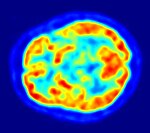
PET image of the human brain showing energy consumption
Although the human brain represents only 2% of the body weight, it receives 15% of the cardiac output, 20% of total body oxygen consumption, and 25% of total body glucose utilization.[40] The need to limit body weight in order, for example, to fly, has led to selection for a reduction of brain size in some species, such as bats.[41] The brain mostly uses glucose for energy, and deprivation of glucose, as can happen in hypoglycemia, can result in loss of consciousness. The energy consumption of the brain does not vary greatly over time, but active regions of the cortex consume somewhat more energy than inactive regions: this fact forms the basis for the functional brain imaging methods PET and fMRI.[42] These are nuclear medicine imaging techniques which produce a three-dimensional image of metabolic activity.
See also
| Wikimedia Commons has media related to: Brain |
- Aging brain
- Cephalic disorders
- Cephalization
- Common misconceptions about the brain
- History of neuroscience
- Lateralization of brain function
- List of neuroscience databases
- List of regions in the human brain
- Lobes of the brain
- Neural development in humans
- Neuroanatomy
- Neuroanthropology
- Neuroscience
- Philosophy of mind
- 10% of brain myth
Notes
- ^ Parent, A; Carpenter MB (1995). "Ch. 1". Carpenter's Human Neuroanatomy. Williams & Wilkins. ISBN 978-0-683-06752-1.
- ^ Cosgrove, KP; Mazure CM, Staley JK (2007). "Evolving knowledge of sex differences in brain structure, function, and chemistry". Biol Psychiat 62 (8): 847–55. doi:10.1016/j.biopsych.2007.03.001. PMC 2711771. PMID 17544382.
- ^ C. Davison Ankney (1992). "Sex differences in relative brain size: The mismeasure of woman, too?". Intelligence 16 (3–4): 329–336. doi:10.1016/0160-2896(92)90013-H.
- ^ Gur RC, Turetsky BI, Matsui M, Yan M, Bilker W, Hughett P, Gur RE (1999). "Sex differences in brain gray and white matter in healthy young adults: correlations with cognitive performance". The Journal of Neuroscience 19 (10): 4065–72. PMID 10234034.
- ^ Kandel, ER; Schwartz JH, Jessel TM (2000). Principles of Neural Science. McGraw-Hill Professional. p. 324. ISBN 978-0-8385-7701-1.
- ^ "Neanderthal Brain Size at Birth Sheds Light on Human Evolution". National Geographic.
- ^ Jones R (2012). "Neurogenetics: What makes a human brain?". Nat Rev Neurosci 13 (10): 655. doi:10.1038/nrn3355. PMID 22992645.
- ^ From the National Library of Medicine's Visible Human Project. In this project, two human cadavers (from a man and a woman) were frozen and then sliced into thin sections, which were individually photographed and digitized. The slice here is taken from a small distance below the top of the brain, and shows the cerebral cortex (the convoluted cellular layer on the outside) and the underlying white matter, which consists of myelinated fiber tracts traveling to and from the cerebral cortex.
- ^ Vanderwolf et al., 1978
- ^ Gray Psychology 2002
- ^ Toro et al., 2008
- ^ a b http://www.braintumor.org/patients-family-friends/about-brain-tumors/brain-anatomy.html
- ^ http://www.buzzle.com/articles/lobes-of-the-brain-and-their-function.html
- ^ Principles of Anatomy and Physiology 12th Edition - Tortora,Page 519.
- ^ Principles of Anatomy and Physiology 12th Edition - Tortora,Page 519-fig.(14.15)
- ^ Churchland, PS (1989). "Ch. 7". Neurophilosophy. MIT Press. ISBN 978-0-262-53085-9.
- ^ Rescher N (1992). G. W. Leibniz's Monadology. Psychology Press. p. 83. ISBN 978-0-415-07284-7.
- ^ Hart, WD (1996). In Guttenplan S. A Companion to the Philosophy of Mind. Blackwell. pp. 265–267.
- ^ Churchland, Neurophilosophy, Ch. 8
- ^ Lacey, A (1996). A Dictionary of Philosophy. Routledge. ISBN 0-7100-8361-0.
- ^ http://discovermagazine.com/2010/sep/25-modern-humans-smart-why-brain-shrinking
- ^ Brown P, Sutikna T, Morwood MJ, et al. (2004). "A new small-bodied hominin from the Late Pleistocene of Flores, Indonesia". Nature 431 (7012): 1055–61. doi:10.1038/nature02999. PMID 15514638.
- ^ Davidson, Iain. "As large as you need and as small as you can'--implications of the brain size of Homo floresiensis, (Iain Davidson)". Une-au.academia.edu. Retrieved 2011-10-30.
- ^ P. Thomas Schoenemann (2006). "Evolution of the Size and Functional Areas of the Human Brain". Annu. Rev. Anthropol 35: 379–406. doi:10.1146/annurev.anthro.35.081705.123210.
- ^ Luders et al., 2008
- ^ Hoppe & Stojanovic, 2008
- ^ Meisenberg, G. (2009). "Wealth, Intelligence, Politics and Global Fertility Differentials". Journal of Biosocial Science 41 (4): 519–535. doi:10.1017/S0021932009003344. PMID 19323856.
- ^ Jones, Edward G.; Mendell, Lorne M. (April 30, 1999). "Assessing the Decade of the Brain". Science (American Association for the Advancement of Science) 284 (5415): 739. doi:10.1126/science.284.5415.739. PMID 10336393. Retrieved 2010-04-05.
- ^ Fisch and Spehlmann's EEG primer
- ^ Preissl, Magnetoencephalography
- ^ Buxton, Introduction to Functional Magnetic Resonance Imaging
- ^ Andrews, Neuropsychology
- ^ Boeree, C. George (2004). "Speech and the Brain". Retrieved July 23, 2012.
- ^ Manlove, George (February 2005). "Deleted Words". UMaine Today Magazine. Retrieved 2007-02-09.
- ^ Schacter, Gilbert, Wegner. "Psychology". Second Edition. New York.Worth Publications. 2009, 2011. p100.
- ^ Schacter, Gilbert, Wegner. "Psychology". Second Edition. New York.Worth Publications. 2009, 2011.p 358.
- ^ Swaminathan, Nikhil (29 April 2008). "Why Does the Brain Need So Much Power?". Scientific American. Scientific American, a Division of Nature America, Inc. Retrieved 19 November 2010.
- ^ Quistorff, Bjørn; Secher, Niels; Van Lieshout, Johanne (July 24, 2008). "Lactate fuels the human brain during exercise". The FASEB Journal 22 (10): 3443. doi:10.1096/fj.08-106104. Retrieved May 9, 2011. More than one of
|work=and|journal=specified (help) - ^ MedBio.info > Integration of Metabolism Professor em. Robert S. Horn, Oslo, Norway. Retrieved on May 1, 2010. [1]
- ^ Clark, DD; Sokoloff L (1999). In Siegel GJ, Agranoff BW, Albers RW, Fisher SK, Uhler MD. Basic Neurochemistry: Molecular, Cellular and Medical Aspects. Philadelphia: Lippincott. pp. 637–670. ISBN 978-0-397-51820-3.
- ^ Safi, K; Seid, MA; Dechmann, DK (2005). "Bigger is not always better: when brains get smaller". Biol Lett 1 (3): 283–286. doi:10.1098/rsbl.2005.0333. PMC 1617168. PMID 17148188.
- ^ Raichle, M; Gusnard, DA (2002). "Appraising the brain's energy budget". Proc Nat Acad Sci U.S.A. 99 (16): 10237–10239. doi:10.1073/pnas.172399499. PMC 124895. PMID 12149485.
References
- Andrews, DG (2001). Neuropsychology. Psychology Press. ISBN 978-1-84169-103-9.
- Buxton, RB (2002). An Introduction to Functional Magnetic Resonance Imaging: Principles and Techniques. Cambridge University Press. ISBN 978-0-521-58113-4.
- Campbell, Neil A. and Jane B. Reece. (2005). Biology. Benjamin Cummings. ISBN 0-8053-7171-0
- Cosgrove, KP; Mazure CM, Staley JK (2007). "Evolving knowledge of sex differences in brain structure, function, and chemistry". Biol Psychiat 62 (8): 847–55. doi:10.1016/j.biopsych.2007.03.001. PMC 2711771. PMID 17544382.
- Fisch, BJ; Spehlmann R (1999). Fisch and Spehlmann's EEG Primer: Basic Principles of Digital and Analog EEG.. Elsevier Health Sciences. ISBN 978-0-444-82148-5.
- Gray, Peter (2002). Psychology (4th ed.). Worth Publishers. ISBN 0-7167-5162-3.
- Kandel, ER; Schwartz JH, Jessel TM (2000). Principles of Neural Science. McGraw-Hill Professional. ISBN 978-0-8385-7701-1.
- McGilchrist, Iain (2009). The Master and His Emissary: The Divided Brain and the Making of the Western World. USA: Yale University Press. ISBN 0-300-14878-X.
- Parent, A; Carpenter MB (1995). Carpenter's Human Neuroanatomy. Williams & Wilkins. ISBN 978-0-683-06752-1.
- Preissl, H (2005). Magnetoencephalography. Academic Press. ISBN 978-0-12-366869-1.
- Ramachanandran, V S (2011), The Tell-Tale Brain: A Neuroscientist's Quest for What Makes Us Human. W. W. Norton & Company.
- Simon, Seymour (1999). The Brain. HarperTrophy. ISBN 0-688-17060-9
- Thompson, Richard F. (2000). The Brain: An Introduction to Neuroscience. Worth Publishers. ISBN 0-7167-3226-2
- Toro, R; Perron M, Pike B, Richer L. Veillette S, Pausova Z, Paus T (2008). "Brain size and folding of the human cerebral cortex". Cerebral cortex (New York, N.Y. : 1991) 18 (10): 2352–7. doi:10.1093/cercor/bhm261. PMID 18267953.
External links
- The Whole Brain Atlas
- High-Resolution Cytoarchitectural Primate Brain Atlases
- Brain Facts and Figures
- Interactive Human Brain 3D Tool
| ||
| ||
| ||
| ||
| ||
| ||
| ||
| ||
| ||

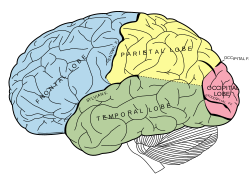



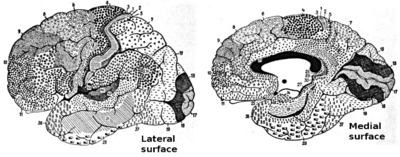
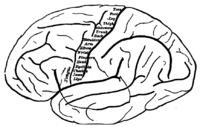
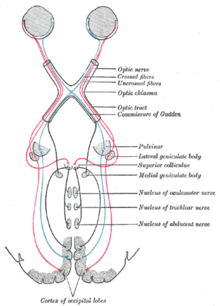

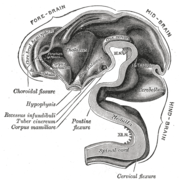



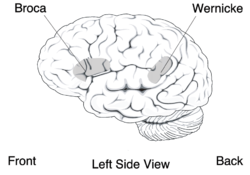
I have become happy to have a look at this newsletter after searching at google, after reading I have written a chunk of the article about how many servings of fruit is an apple Thank you for the thing and supporting me.
ReplyDelete